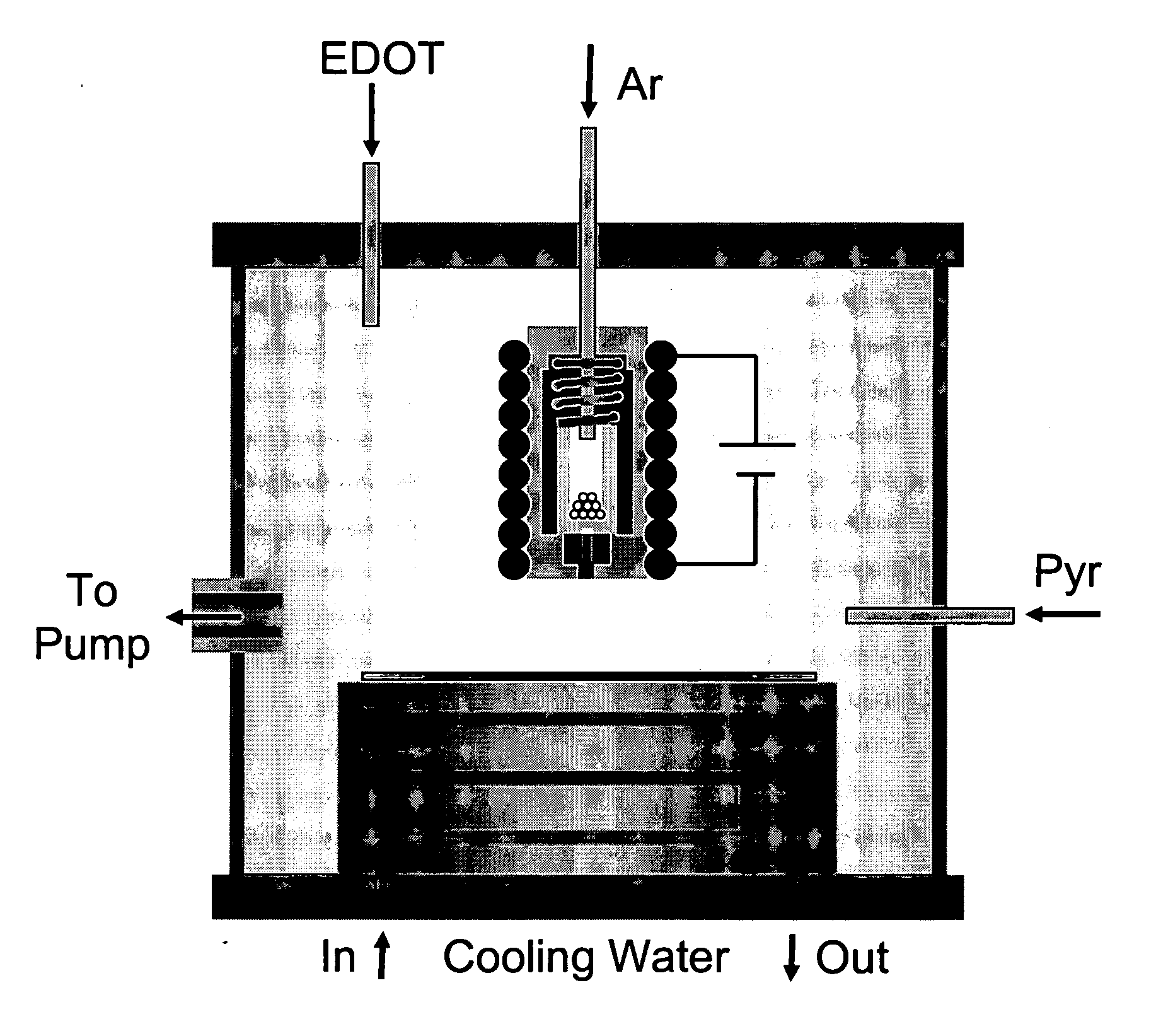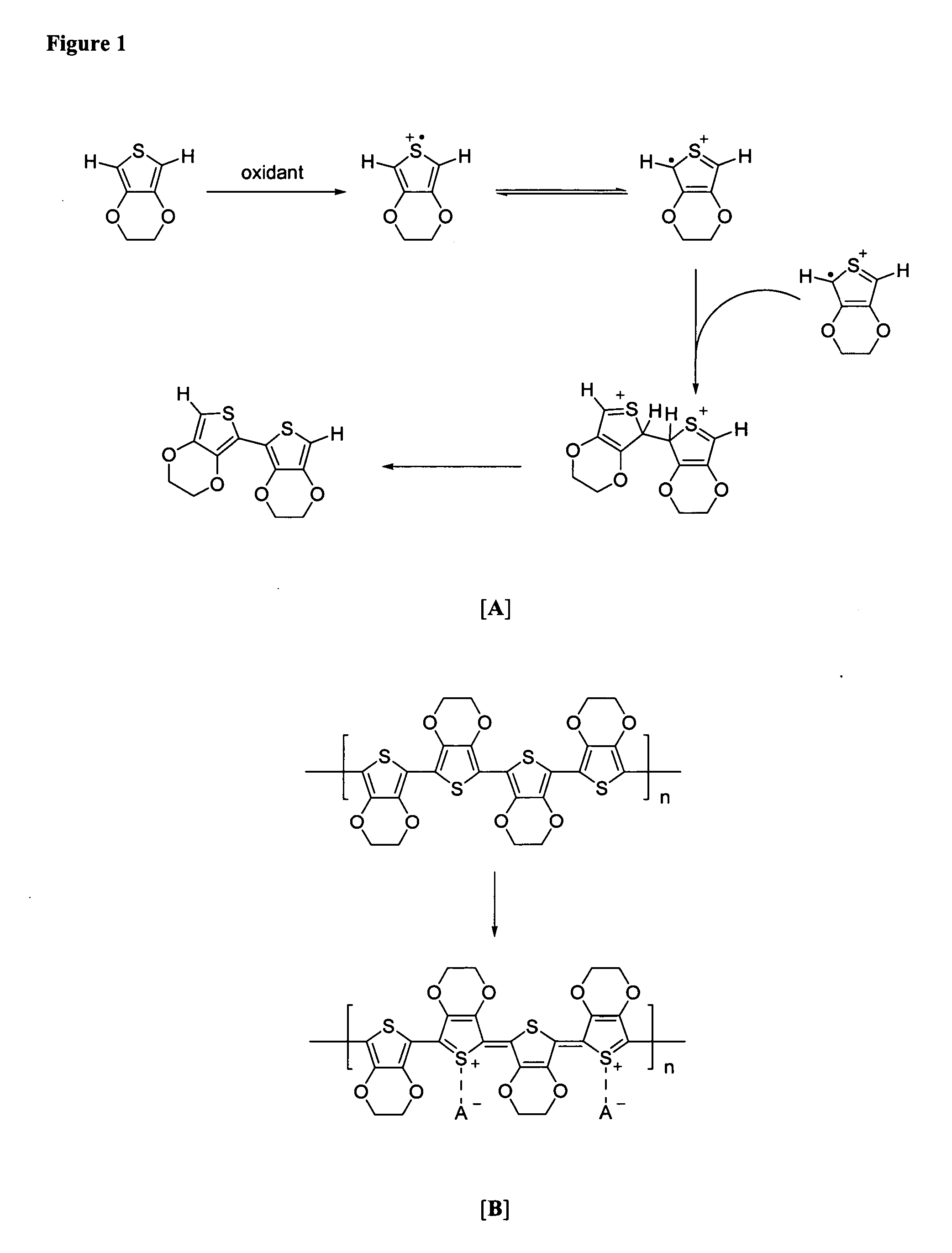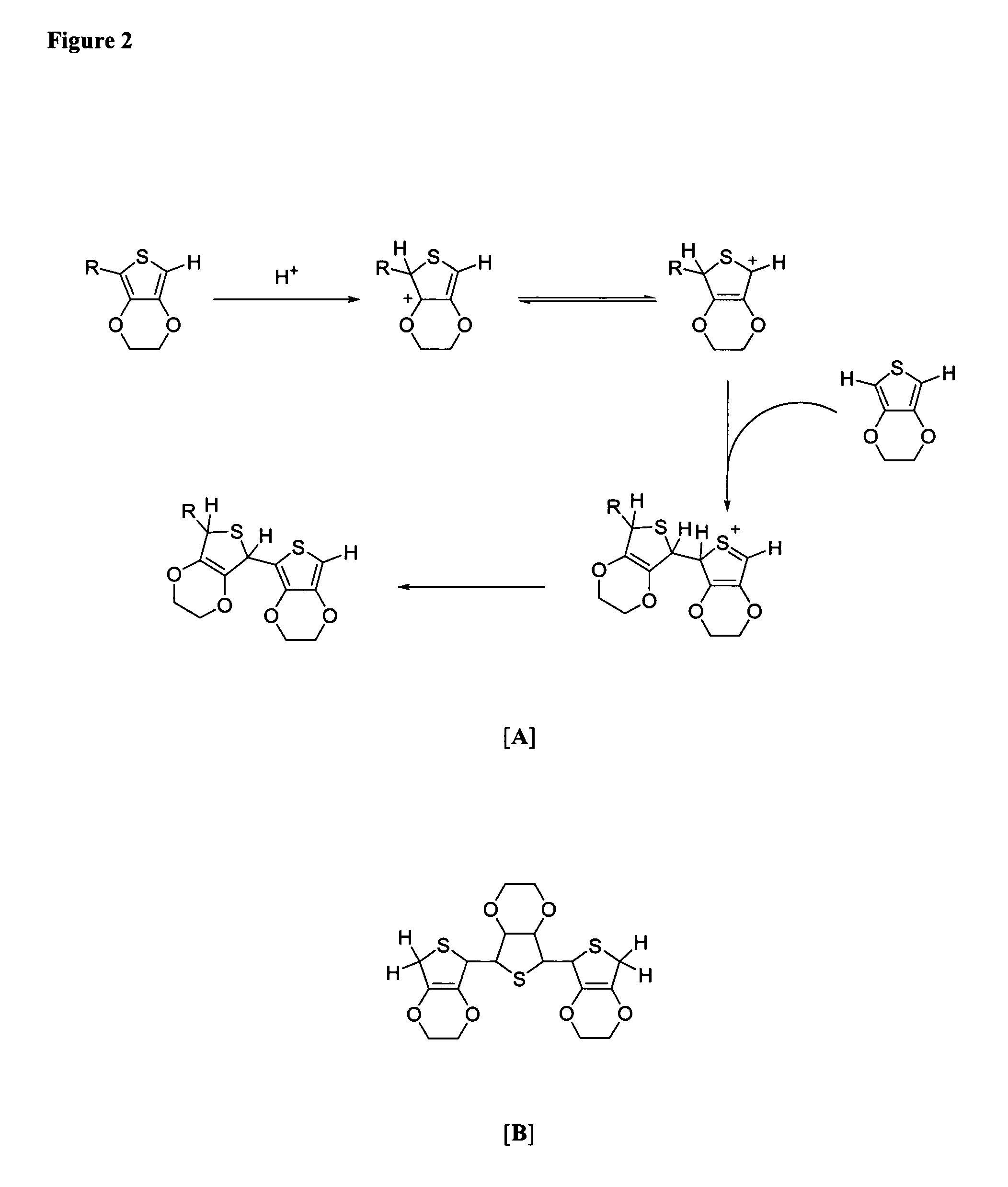Oxidative chemical vapor deposition of electrically conductive and electrochromic polymers
a technology of electrochromic polymers and oxidative chemical vapor deposition, which is applied in the field of conducting polymeric materials, can solve the problems of limiting the application of electronic devices and the inability to process bulk materials of these polymers
- Summary
- Abstract
- Description
- Claims
- Application Information
AI Technical Summary
Benefits of technology
Problems solved by technology
Method used
Image
Examples
example 1
CVD Deposition and Characterization of PEDOT Films
[0172] PEDOT depositions were carried out in a custom-built vacuum chamber that has been described elsewhere and is depicted in FIG. 3. [D. D. Burkey, K. K. Gleason, J Appl Phys 93, 5143 (2003); H. G. Pryce-Lewis, D. J. Edell, K. K. Gleason, Chem Mater 12, 3488 (2000).] Glass slides and silicon wafers were used for substrates. The stage is regulated with cooling water and is normally kept at 34° C. A stage heater is available when stage temperatures greater than room temperature are desired. The stage can also be biased with a DC Voltage using a Sorenson DCS 600-1.7 power supply. The chamber pressure was controlled by a butterfly valve connected to an MKS model 252-A exhaust valve controller and was maintained at approximately 300 mTorr. Fe(III)Cl3 (97%, Aldrich) was selected as the oxidant. The powder was loaded in a porous crucible with a nominal pore size of 7 μm and positioned above the stage. The crucible was heated to a temper...
example 2
In-Situ Polymerization of Standard PEDOT Films
[0175] A Bayer formula for the in-situ polymerization of BAYTRON M was used to make a standard PEDOT film. 1 mL of EDOT monomer and 39 mL BAYTRON C were combined and allowed to mix for 10 minutes. The solution was then spun onto silicon and glass at 3000 rpm for 40 seconds using a spincoater (Model P6700, Specialty Coating Systems). The films were heated to 80° C. under vacuum for 10 minutes, rinsed in methanol, and allowed to dry. FTIR spectra and conductivity measurements were collected for the standard PEDOT material.
PUM
| Property | Measurement | Unit |
|---|---|---|
| Electrical conductor | aaaaa | aaaaa |
Abstract
Description
Claims
Application Information
 Login to View More
Login to View More - R&D
- Intellectual Property
- Life Sciences
- Materials
- Tech Scout
- Unparalleled Data Quality
- Higher Quality Content
- 60% Fewer Hallucinations
Browse by: Latest US Patents, China's latest patents, Technical Efficacy Thesaurus, Application Domain, Technology Topic, Popular Technical Reports.
© 2025 PatSnap. All rights reserved.Legal|Privacy policy|Modern Slavery Act Transparency Statement|Sitemap|About US| Contact US: help@patsnap.com



